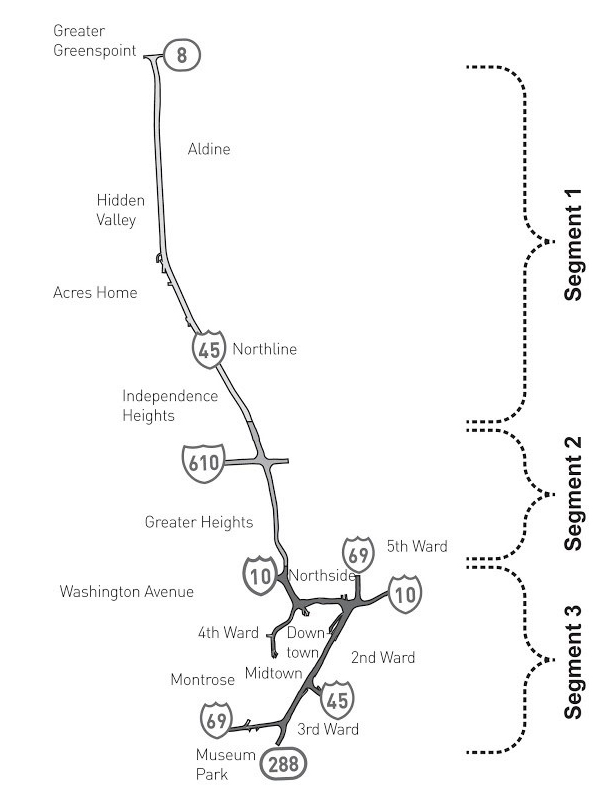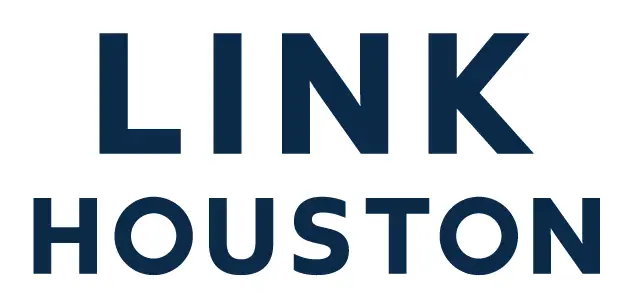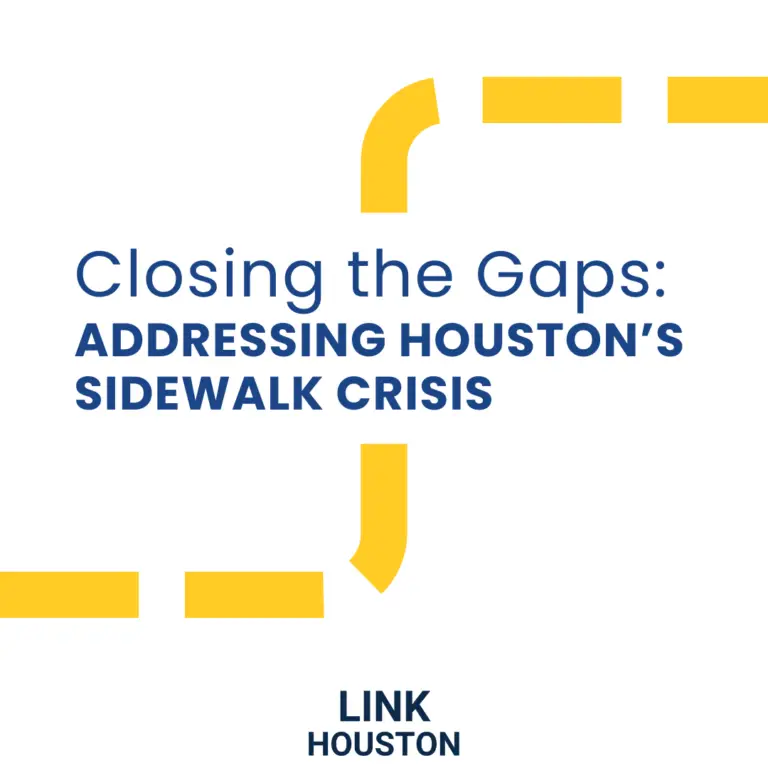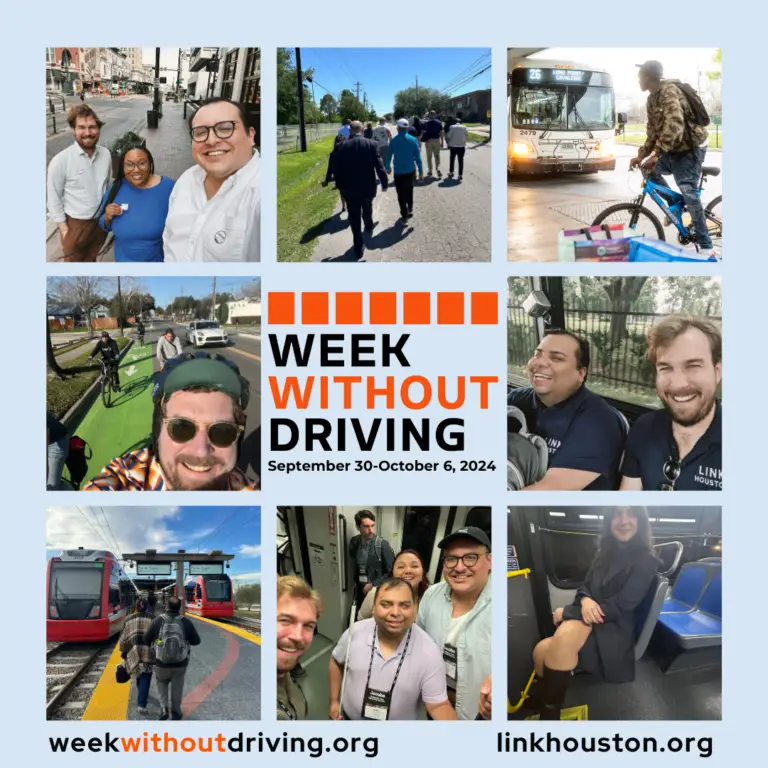What is an MOU and why are we talking about it?
City of Houston’s Mayor Turner, with support from Harris County officials, responded to public outcry by facilitating a re-visioning community engagement process in 2019 into early 2020. The City presented the new vision to the public and TxDOT in April 2020. Over the last 31 months, the City, County, and TxDOT officials have held an on and off again dialogue around establishing one or several memorandums of understanding (MOU) to ensure the new vision changes the project. The City signed an MOU with TxDOT on Monday, December 19, 2022. The County is anticipated to sign their MOU with TxDOT on Thursday, December 22, 2022.
Memorandum of Understanding (MOU)
An agreement between two or more parties outlined in a formal document; not strictly legally binding; communicates the mutually accepted expectations of all of the parties involved in a negotiation. (Adapted from Investopedia)
The North Houston Highway Improvement Project (NHHIP), also known as the I-45 North Expansion project, consists of three segments. The Texas Department of Transportation (TxDOT) project extends about 24 miles and will cost at least $9.5 billion, not including any public funds used to take property for right-of-way expansion.

Houston’s Re-Visioning based on Deep Community Engagement in 2019-2020
The City of Houston MOU is a response to a re-visioning process based on effective, iterative community engagement in 2019 and 2020. Understanding the process and outcomes of the re-visioning is essential for evaluating how well the MOU meets Houston’s expectations.
- Link to Final Workshop Summary (February 2020)
- Link to City Presentation to Region (April 2020)
- Link to Mayor 2020 Vision in Letter to TxDOT (May 2020)
- Link to Map with Mayor 2020 Vision Notes (May 2020)
In May 2020, Mayor Turner’s new vision called on TxDOT to change course through…
- Housing and Community Cohesion
- Drainage and Flood Mitigation
- Reducing the NHHIP Footprint
- Local and Bus Rapid Transit
- Multimodal Street Connectivity
- Park Space & Urban Design
- Air Quality
City of Houston & TxDOT MOU
The chart below summarizes how well the City of Houston and TxDOT MOU address Houston’s vision, including notes about the strength of the language (i.e., specificity) and whether a commitment is in fact new or enhanced. The City & TxDOT MOU makes no distinction between Segments 1, 2, or 3, except in a few particular instances. The City MOU largely dismisses any substantial changes to Segment 3 around downtown where much of the residential displacement occurs in communities of color or low-moderate income communities.
| City of Houston & TxDOT MOU Topic | Loss | Neutral | Win |
| 1. Housing and Community Cohesion
2020 Re-Vision: This project must leave residents and communities whole. That means ensuring that all displaced residents can relocate in their neighborhoods and affordable housing supply is not reduced. |
Mostly Loss
(Few significant new commitments, weak terms, far too little money) |
||
| 2. Drainage and Flood Mitigation
2020 Re-Vision: This project must not only reduce the incidence of flooding on the freeway but also reduce the flood risk in the surrounding neighborhoods. |
Win
(Firm agreement) |
||
| 3. Reducing the NHHIP Footprint During Detailed Design
2020 Re-Vision: Public comments resulted in one design concept for Segments 1 and 2 of the North Houston Highway Improvement Project: rebuild the highway within the current footprint as much as possible, no added main lanes, current reversible HOV lane is replaced with two-way, dedicated transit lanes, design exceptions and lane widths and shoulder widths as required to keep the footprint within the current right of way. |
Potential Loss, Potential Win
(Weak terms, many allowed exceptions, no clear plan to use design exceptions on main lanes, MaX lanes, or frontage streets) |
||
| 4. Transit and MaX Lanes
2020 Re-Vision: This project should expand transit options, increase the reliability of transit, and support the voter-approved METRONext plan elements, including the Downtown-Greenspoint-IAH bus rapid transit, dedicated transit lanes, and intermediate BRT stations. |
Mostly Neutral
(Likely no dedicated lanes, transit reliability questionable, weak terms, no funding commitment for stations) |
||
| 5. Connectivity
2020 Re-Vision: This project must retain and expand neighborhood connectivity, accommodate freight movement, and make travel safer for everyone, whether on the highway or a local street, on foot or on a bike or in a car. The project should maximize opportunities to restore connections to the street grid that would also encourage new development. |
Mostly Win
(Better sidewalks and bikeways, but some weak terms and allowed exceptions) |
||
| 6. Park Space & Urban Design
2020 Re-Vision: The project should minimize impacts on parks and facilitate the creation of new green space, and the design of the project should recognize the history and character of the surrounding neighborhoods. The NHHIP should support the restoration and development of the EaDo Cap area as it holds the greatest potential economic impact for the City. Other cap areas should also be created to support reconnecting communities and added park space. |
Mostly Neutral
(No net loss of parks and recreation space, more trails, but many weak terms and few new commitments) |
||
| 7. Air Quality
2020 Re-Vision: We should find every way we can to reduce and mitigate the significant air quality impacts that highways have regionally and the neighborhoods surrounding them, including by monitoring air quality, and providing mitigation for sensitive populations. |
Potential Loss
(Air quality is not mentioned in the City & TxDOT MOU but the County & TxDOT MOU addresses some aspects) |
Harris County’s 2019 Resolution about the NHHIP
Harris County Commissioners Court unanimously passed a resolution pertaining to the realignment of I-45 North and I-69 on August 7, 2019. The County also consistently participated in and supported the City of Houston led re-visioning community engagement.
Link to Harris County Resolution on Major Transportation Projects
County leaders unanimously, in a rare bipartisan action, stated, “TxDOT’s proposed NHHIP represents a once-in-generations opportunity to improve the region’s image and mobility, while mitigating past impacts, and…every major infrastructure project using taxpayer dollars should be seen as an opportunity to improve quality of life in the surrounding neighborhoods, rather than simply mitigating negative impacts: now, therefore be it resolved that…all regionally significant transportation projects undertaken by local, state, and federal entities in Harris County must meet the following benchmarks:”
- Enhance walking and biking connections between and within existing communities
- Improve safety for people in vehicles, walking, and biking, on the facility and on connecting streets
- Reduce historic flooding patterns and aggressively mitigate
- Prioritize use of existing right-of-way, mitigate displacing residents and business owners
- Preserve existing businesses and community resources
- Protect and enhance parks and open spaces
- Meet Harris County Flood Control District standards
- Encourage engineering design for innovative multi-modal transportation
- Mitigate damage to air quality and noise
Harris County & TxDOT MOU
The chart below summarizes how well the Harris County and TxDOT MOU address the 2019 unanimous commissioners’ court resolution about the NHHIP, including notes about the strength of the language (i.e., specificity) and whether a commitment is in fact new or enhanced. The Harris County & TxDOT MOU offers some commitments specific to each of the three segments. Similar to the City of Houston & TxDOT MOU, the County MOU largely dismisses any substantial changes to Segment 3 around downtown where much of the residential displacement occurs in communities of color or low-moderate income communities.
| Harris County & TxDOT MOU Topic | Loss | Neutral | Win |
| 1. Enhance walking and biking connections between and within existing communities | Potential Win
(Commitment to specifically study multimodal traffic implications on local streets, uncertain outcomes or TxDOT participation on improvements to crossing streets) |
||
| 2. Improve safety for people in vehicles, walking, and biking, on the facility and on connecting streets | Mostly Win
(More clear commitment to better access streets with higher comfort bikeways and sidewalks paid for by TxDOT, but some exceptions allowed) |
||
| 3. Reduce historic flooding patterns and aggressively mitigate | Win
(Multiple and firm agreements) |
||
| 4. Prioritize use of existing right-of-way, mitigate displacing residents and business owners | Mostly Loss per Housing
(Restated existing commitments and standard required practices, far too little money) |
Potential Loss, Potential Win per Right-of-Way
(Applies only to Segments 1 and 2, weak terms, many allowed exceptions, no clear intent to use design exceptions on main lanes, MaX lanes, or frontage streets) |
|
| 5. Preserve existing businesses and community resources | Potential Loss, Potential Win
(Not specifically addressed in the MOU except through the weak commitment to evaluate reducing the right-of-way footprint in Segments 1 and 2) |
||
| 6. Protect and enhance parks and open spaces | Mostly Win
(Potential small park expansion, more trails, and Green Ribbon program throughout, but many weak terms and few new commitments) |
||
| 7. Meet Harris County Flood Control District standards
|
Win
(Firm agreement to latest standards and deep oversight and collaboration) |
||
| 8. Encourage engineering design for innovative multi-modal transportation | Mostly Win
(Better sidewalks, bikeways, and BRT transit, but some weak terms, allowed exceptions, and reserved rights for TxDOT raise concerns) |
||
| 9. Mitigate damage to air quality and noise | Potential Loss
(Air quality monitoring and noise/aesthetic walls or tining are positives, but overall outcome for adjacent communities will remain inequitable) |
LINK Houston’s Latest Thoughts
Hello. I am Jonathan Brooks, LINK Houston’s Director of Policy & Planning. I am here to speak on our behalf about the present state of the I-45 North expansion project and the two memorandums of understanding, or MOUs, signed this week.
The City of Houston and Harris County MOUs with TxDOT do too little to resolve issues with the NHHIP – or I-45 North Expansion. LINK Houston remains concerned about the equity implications and will remain vigilant. TxDOT’s commitments are too few and the dollars to implement solutions even fewer.
I will make four points.
First, language in the MOUs is too often weak and imprecise – to TxDOT’s favor.
While the City MOU contains some wins for communities in the path of the project, the overall document reads too much as if written by TxDOT and downtown interests. TxDOT makes few new concessions and agrees only to refine the project “where feasible” and “where practicable” within the confines of the existing environmental documentation and at the state agency’s discretion. Suggestions or considerations are better terms for such weak, imprecise concessions. The City appears to have secured TxDOT’s signature to primarily do what the state agency previously committed to do – bikeways on access roads, MAX managed lanes with potential BRT (with caveats and no state money to pay for them), freeway caps with no dollars to greenscape, a small amount of additional flood mitigation money, and $30 million in affordable housing money TxDOT already committed. The bikeway and sidewalk commitments improve on past commitments, which included a 15’ right-hand shared lane as the bike facility, but weak language leaves us concerned. The I-45 North Expansion marginally does more to realize the ambitions of Houston reflected in the Resilient Houston Strategy, Vizion Zero Action Plan, Climate Action Plan, and Houston METRO’s METRONext Plan.
The Harris County MOU contains more concrete language but at key junctures still leaves far too much room for the state to maneuver. TxDOT agrees to, “evaluate the design of Segments 1 [and 2] to reduce the footprint and rebuild within the current footprint where feasible and consistent with the existing purpose and need and record-of-decision.” The state simply commits to communicate to Harris County the results of the evaluations prior to detailed design. METRO gets one year to identify potential bus rapid transit (BRT) stations, after which TxDOT will evaluate feasibility (and this only applies to Segment 1) – again no teeth and noticeably lacking any financial commitment by the state. Note to listener, most federal highway and transportation funds can be used for transit improvements in an interstate corridor – TxDOT can fund transit capital improvements but is not committing to do so.
Second, let’s talk about transit implications. The Houston region awarded funds to and formally supports METRO’s Inner Katy BRT which connects the Northwest Transit Center to Downtown – with several stations in between. METRO is actively planning, doing early engineering, and working on environmental studies. The transit agency knows the project cost will be substantially higher if inhibited by TxDOT’s I-45 North expansion and other potential I-10 projects. TxDOT appears to have extracted a significant concession in opposition to the regionally supported BRT line, “METRO’s planned BRT connection into the CBD [Central Business District] will not preclude potential improvements by TxDOT in both the Inner Katy Corridor and the NHHIP.” So, TxDOT reserved the right to do their preferred project in any way they see fit, which increases the likely cost threefold for METRO on the regionally supported BRT line, and the state has no commitment to offset the resulting cost increase.
Third point, TxDOT’s current design for the NHHIP requires nearly doubling the right-of-way in most locations – which is why TxDOT’s own information details how at least 1,079 residences, 344 businesses (thousands of jobs), 2 schools, and 5 places of worship have already or will be displaced. Both MOUs cite TxDOT commitments to reduce the footprint in Segments 1 and 2, “where feasible”, with no changes to Segment 3 around downtown. Displacing families of color and businesses to re-route or expand a highway is 20th century injustice brought full force into the 21st century. It simply should not be. LINK Houston will continue to work alongside communities and partners to help City of Houston and Harris County to hold TxDOT accountable to stay within the footprint, to the absolute greatest extent possible. The City’s re-visioning process determined it was absolutely possible to meet TxDOT’s stated purpose and need while remaining almost entirely within the footprint – especially in Segments 1 and 2. TxDOT must study the strategies in that vision to determine how to adjust lane uses and design to stay in the right-of-way. TxDOT – remove our doubt, demonstrate leadership and 21st century leadership – we don’t believe in you now, but you can make us begin to do so, as you follow through in good faith.
In conclusion, some of the commitments, purportedly concessions, suggest hope for a better project and certainly the project is already better than what would already be under construction today were it not for communities and local officials flexing collective power over the last 5+ years. That said, the MOUs are insufficient alone. LINK Houston remains committed to ensuring the eventual project is transformational and reflects Houston’s ambition and commitment to equity and justice. Whatever is eventually built will include nearly a decade of on and off disruption to more than 80% of METRO riders using bus and light rail, in addition to disruption for people biking, walking, or rolling, in the adjacent communities. We will continue to be vigilant to ensure TxDOT, City of Houston, Harris County, METRO, and every government entity get the project right. While a perfect project does not exist, an even better project remains possible. It must begin with renewed, consistent public dialogue where TxDOT and partners report on every activity committed to in both MOUs.
LINK Houston – December 21, 2022






